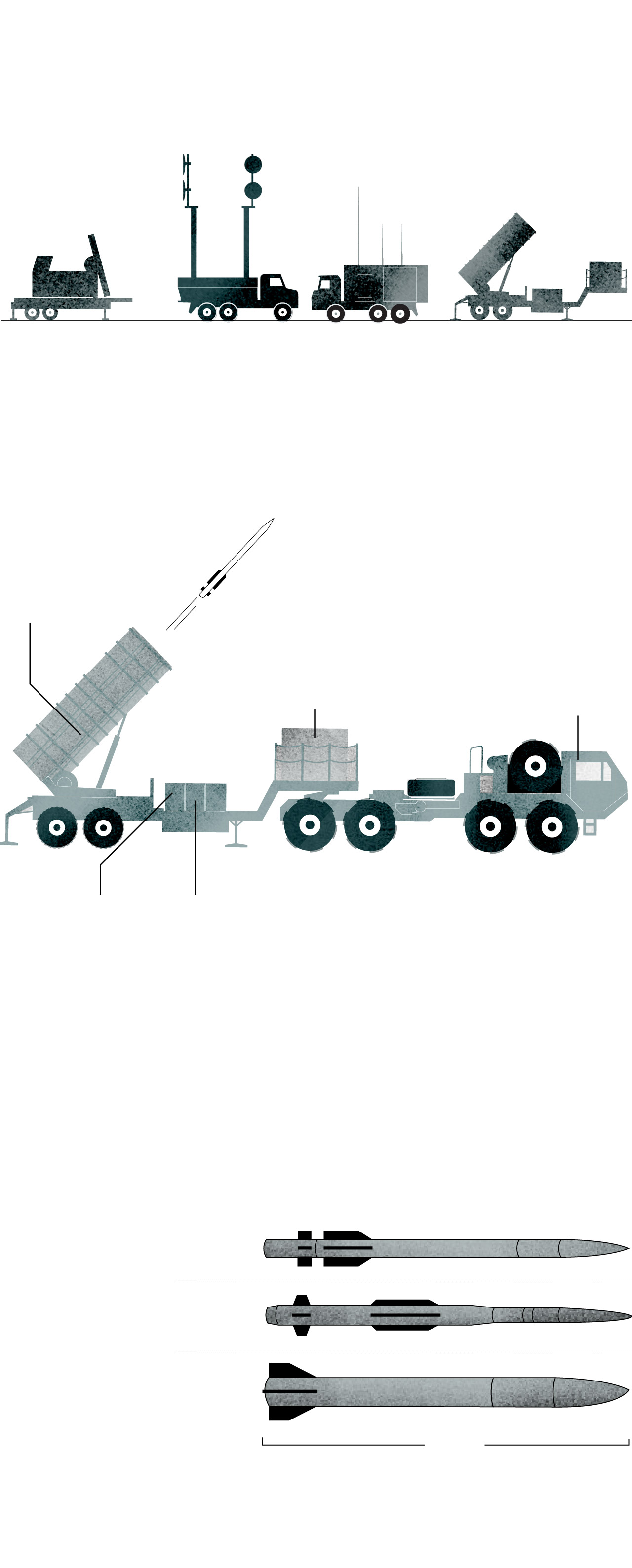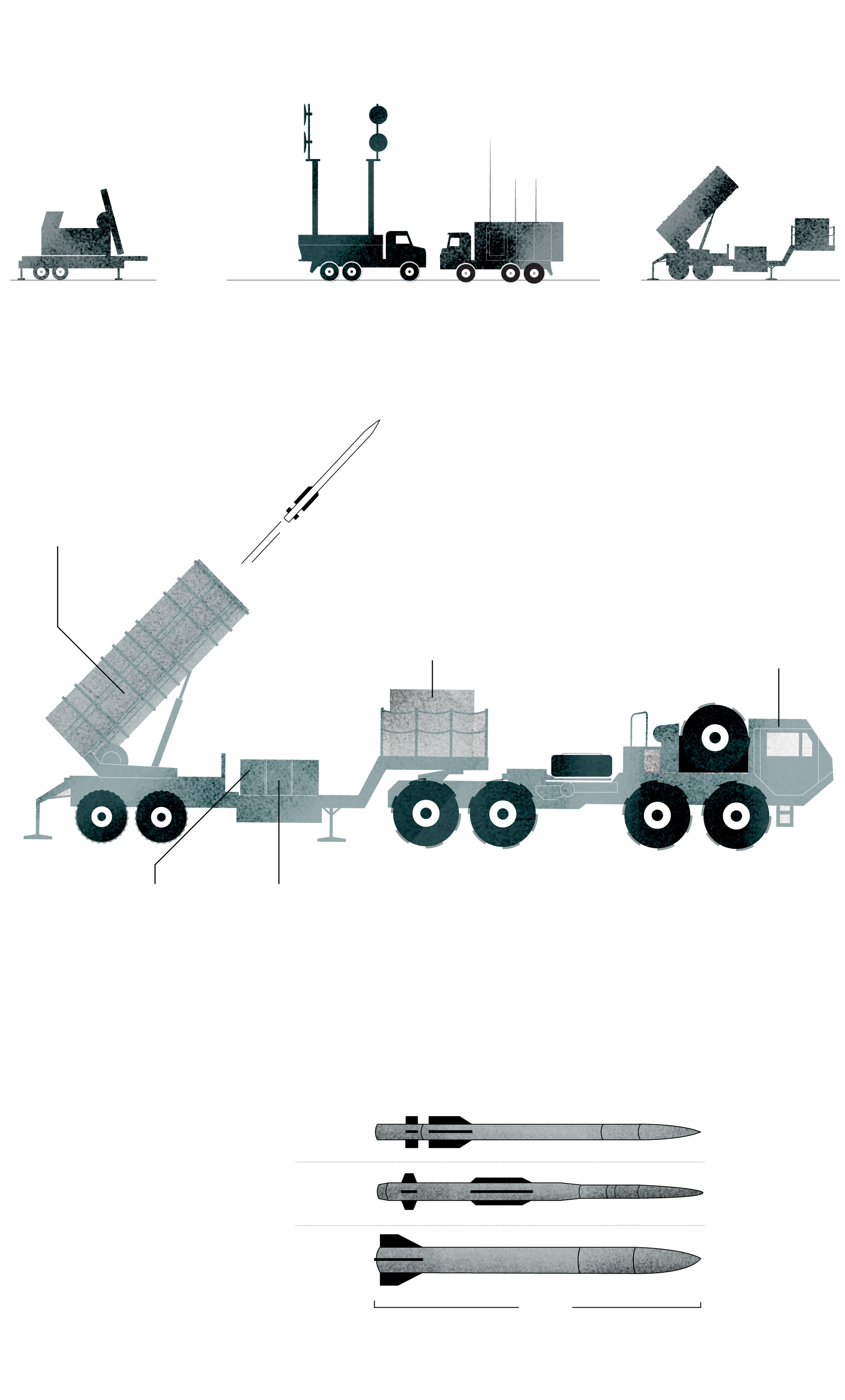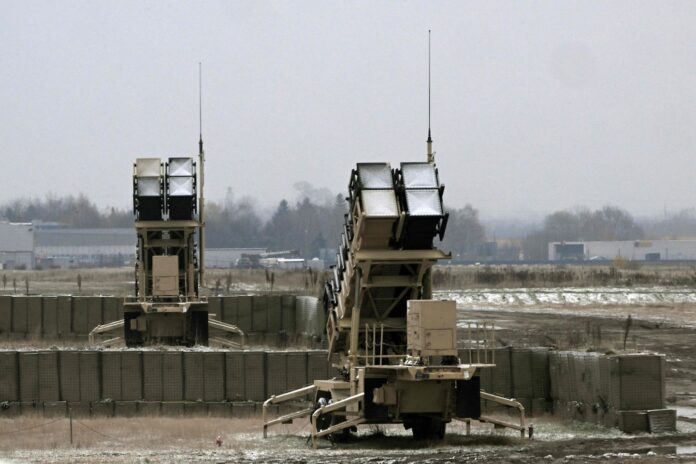The change — a modification in defense export rules — will not explicitly mention the Patriot system but will meet a key request by the Biden administration, said U.S. officials, speaking on the condition of anonymity to discuss ongoing talks.
Japan manufactures missiles for the Patriot, the U.S. military’s premier air defense system, under license from Raytheon.
President Biden raised the issue with Prime Minister Fumio Kishida at Camp David in August, during a historic tripartite summit with South Korea, and again at an economic summit in San Francisco last month. Seoul has quietly pledged to provide hundreds of thousands of rounds of artillery ammunition for Ukraine over the past year — more than all European countries combined. A significant amount of that has been provided, officials said.
Japan, concerned that Russia’s invasion could embolden China to take similar action against Taiwan, has been a supporter of Ukraine. It was the first East Asian country to join Western sanctions against Moscow. Kishida, speaking in January as he kicked off the nation’s year as head of the Group of Seven, pointedly noted that “Ukraine may be the East Asia of tomorrow.”
The cabinet is expected to announce the change as early as Friday. The Patriots will not go directly to Ukraine. Rather, Japan is considering sending dozens of missiles to the United States so it can replenish its stocks earmarked for Japan and the Indo-Pacific. Tokyo has not yet furnished a timeline, but a decision on a number is expected “relatively soon,” an official said.
The munitions in question are PAC-2 and PAC-3 interceptors. The former are designed to destroy some types of ballistic missiles by exploding nearby, and the latter are hit-to-kill munitions that take direct aim at missiles and aircraft and pack a larger explosive punch. The more advanced PAC-3 interceptors run about $4 million apiece, according to analysts.
The move comes as Ukrainian President Volodymyr Zelensky, in a visit to Washington last week, sounded the alarm over his country’s defenses. Only a “handful” of munitions remain to protect Kyiv, and he wants more to protect major cities like Odessa, he said at a private gathering of analysts at the Ukrainian Embassy, according to a person familiar with the meeting, which was first reported by Politico.
Ukraine has a patchwork of systems to protect against aerial threats, but they are stressed by the persistent barrage of Russian missiles and drones. Meanwhile, prospects remain dim that Republican lawmakers will approve Biden’s ask for $60 billion in additional security assistance.
With Patriots already in high demand across Eastern Europe, the Israel-Gaza war has further stretched the supply. A wave of aerial attacks on U.S. troops in the Middle East has prompted the Pentagon to deploy air defense troops to the region, including those who operate Patriot batteries.
Ukraine says it has used the Patriot system to shoot down Russian ballistic missiles, including the air-launched Kinzhal. It has scored other significant kills: In May, a Patriot air defense unit shot down three enemy helicopters and two jets still in Russian airspace after they fired into Ukraine.

A typical Patriot battery includes a radar set, engagement control station, power generation and several launch stations.
Missile Canisters
These canisters store the Patriot’s interceptors. Each one can carry four PAC-3 missiles, for a total of 16 rounds on each launcher.
Power Generator
It provides the power to run the launching station’s electrical systems.
Launcher Electronics Module
It houses the launcher’s power as well as the launch and motor control units.
Datalink
Terminal
Module
It maintains a radio digital data link between the station and a remote engagement control station.
Tow Truck
It can remain attached to the launcher during launch operations or it can detach.
Some newer models of these systems have different capabilities and equipment than previous iterations.
PAC-2 and PAC-3, two families
of interceptors
The missile is command-guided near the target. In its terminal phase, it uses Track-Via-Missile (TVM) guidance to track the target as it is illuminated by the ground-based engagement radar.
Source: Center for Strategic and International Studies

A typical Patriot battery includes a radar set, engagement control station, power generation and several launch stations.
Missile Canisters
These canisters store the Patriot’s interceptors. Each one can carry four PAC-3 missiles, for a total of 16 rounds on each launcher.
Power generator
It provides the power to run the launching station’s electrical systems.
Datalink
Terminal
Module
It maintains a radio digital data link between the station and a remote engagement control station.
Launcher Electronics Module
It houses the launcher’s power as well as the launch and motor control units.
Tow Truck
It can remain attached to the launcher during launch operations or it can detach.
Some newer models of these systems have different capabilities and equipment than previous iterations.
PAC-2 and PAC-3, two families
of interceptors
The missile is command-guided near the target. In its terminal phase, it uses Track-Via-Missile (TVM) guidance to track the target as it is illuminated by the ground-based engagement radar.
Source: Center for Strategic and International Studies

A typical Patriot battery includes a radar set, engagement control station, power generation and several launch stations.
Missile Canisters
These canisters store the Patriot’s interceptors. Each one can carry four PAC-3 missiles, for a total of 16 rounds on each launcher.
Tow Truck
It can remain attached to the launcher during launch operations or it can detach.
Power generator
It provides the power to run the launching station’s electrical systems.
Launcher Electronics Module
It houses the launcher’s power as well as the launch and motor control units.
Datalink Terminal Module
It maintains a radio digital data link between the station and a remote engagement control station.
Some newer models of these systems have different capabilities and equipment than previous iterations.
PAC-2 and PAC-3, two families of interceptors
The missile is command-guided near the target. In its terminal phase, it uses Track-Via-Missile (TVM) guidance to track the target as it is illuminated by the ground-based engagement radar.
Source: Center for Strategic and International Studies

A typical Patriot battery includes a radar set, engagement control station, power generation and several launch stations.
Missile Canisters
These canisters store the Patriot’s interceptors. Each one can carry four PAC-3 missiles, for a total of 16 rounds on each launcher.
Power generator
It provides the power to run the launching station’s electrical systems.
Tow Truck
It can remain attached to the launcher during launch operations or it can detach.
Datalink Terminal Module
It maintains a radio digital data link between the station and a remote engagement control station.
Launcher Electronics Module
It houses the launcher’s power as well as the launch and motor control units.
Some newer models of these systems have different capabilities and equipment than previous iterations.
PAC-2 and PAC-3, two families of interceptors
The missile is command-guided near the target. In its terminal phase, it uses Track-Via-Missile (TVM) guidance to track the target as it is illuminated by the ground-based engagement radar.
Source: Center for Strategic and International Studies
The Patriot, said John Hardie, the deputy director of the Russia program at the Foundation for Defense of Democracies, “is very, very useful to Ukraine — it’s probably Ukraine’s most capable air defense system.”
Germany has provided two Patriot batteries, along with one delivered by the United States. The systems allow greater coverage of the skies, but getting enough interceptor missiles has been a challenge, said Ukrainian Air Force spokesman Yuriy Ihnat.
“The enemy attacks every day, and the expenditure of ammunition is high,” Ihnat said. Western countries have boosted production, he said. “But even this is not enough. They make weapons for themselves and for us.”
Last winter, some Russian airstrikes could have succeeded in destroying Kyiv’s power grid if not for intercepts by Ukrainian air defenses, Hardie said. “So,” he said, “even a few dozen interceptors could prove critical for Ukraine.”
The move by Tokyo caps a year of remarkable changes to its national defense policy, including a major increase in defense spending and a plan to buy hundreds of U.S.-made Tomahawk cruise missiles. Japan is allowing U.S. Marines to position a new littoral regiment in Okinawa equipped with advanced capabilities, such as anti-ship missiles that could target Chinese vessels in the event of a Taiwan conflict. It is also developing a new advanced fighter jet with Britain and Italy.
“Japan [is] really making some profound changes … to demonstrate its unwavering commitment to the international order and international security environment,” said a senior Biden administration official, speaking on the condition of anonymity under ground rules set by the White House. “It’s doing that in lockstep with the United States as the closest of [its] alliance partners. What the Kishida government has been able to do is truly a break with the past.”
Noriyuki Shikata, Japan’s cabinet secretary for public affairs, said the prospective loosening of export rules is “a first step” in a review of defense export guidelines.
The review was ordered a year ago in Japan’s national security strategy, and since then, the two parties that make up the ruling coalition have debated ways to ease long-standing restrictions on weapons exports to strengthen cooperation with Western partners and boost Japan’s defense industry.
The debate has not gone smoothly.
The ruling Liberal Democratic Party has backed the changes from the start, but its coalition partner, Komeito, a pacifist party wary of expanding Japan’s military might, for months resisted. The two sides struggled to reach consensus on key areas, including the categories of equipment to be approved for export.
Last month, they agreed in principle to allow defense exports manufactured by Japanese firms but produced under U.S. license. LDP leaders had argued that failing to meet Washington’s requests for such arms transfers could impede the deepening of U.S.-Japan relations.
“This is a turning point for postwar Japan, but our stance as a nation of peace remains unchanged,” Itsunori Onodera, the former defense minister who leads the 12-member working group of LDP and Komeito members hashing out the changes, told reporters last week.
The expected decision would be the first modification to Japan’s defense export regulations since 2014. It would lift the ban on licensed defense exports, which would enable Patriot interceptors produced in Japan to be placed in the U.S. inventory. The net effect would be to free up Patriot missiles the United States would otherwise set aside for the region, enhancing its flexibility to send them to Ukraine.
“It couldn’t come at a better time,” said a second U.S. official familiar with the matter.
“Integrated air and missile defense is why Ukraine remains sovereign,” John D. Hill, a senior Pentagon official overseeing space and missile defense, told lawmakers this month, echoing other defense officials who have said air defense is perhaps Ukraine’s most urgent need right now.
The Pentagon, already down one battery delivered to Ukraine, announced in October that it was deploying air defense units to the Middle East to defend U.S. troops in Iraq and Syria against attacks launched by Iranian-backed militias. That deployment, among others, will further limit available stocks of systems and interceptors.
“Everything is finite — and missile defense is no exception,” said Tom Karako, director of the missile defense project at the Center for Strategic and International Studies. “We do have to be cognizant of our overall global force structure and requirements for air and missile defense.”
The development, U.S. officials said, supports two goals: First, to help Japan strengthen its defensive posture and enhance its standing as a regional security provider. Second, to continue to engage and support allies around the world in backing Ukraine.
U.S. national security adviser Jake Sullivan in June raised with his counterpart, Takeo Akiba, the prospect of Japan backfilling U.S. Patriot missile inventories along with 155mm ammunition. Washington and Japan’s ruling party had hoped initially that the policy changes would be far-reaching — to include allowing Japan to export weapons directly to countries at war.
But the LDP, which is grappling with a major political fundraising scandal, lacked domestic support for such sweeping reform. Kishida himself is politically imperiled: His approval rating has plunged to a record low of 17.1 percent, exacerbating an erosion of public support due to high inflation and domestic challenges.
The provision of 155mm artillery rounds, which are used for offensive purposes, proved too difficult to push forward. But the Patriot interceptors — part of a defensive system — were an easier sell.
The loosening of export rules nonetheless “is symbolic of Japan’s desire to be a more comprehensive defense partner with the United States,” said Christopher Johnstone, Japan chair at the Center for Strategic and International Studies. “It’s a significant step for Japan. And it does provide Ukraine with a really needed capability.”
Lee reported from Seoul. Julia Mio Inuma in Tokyo and Serhii Korolchuk in Odessa, Ukraine, contributed to this report.



